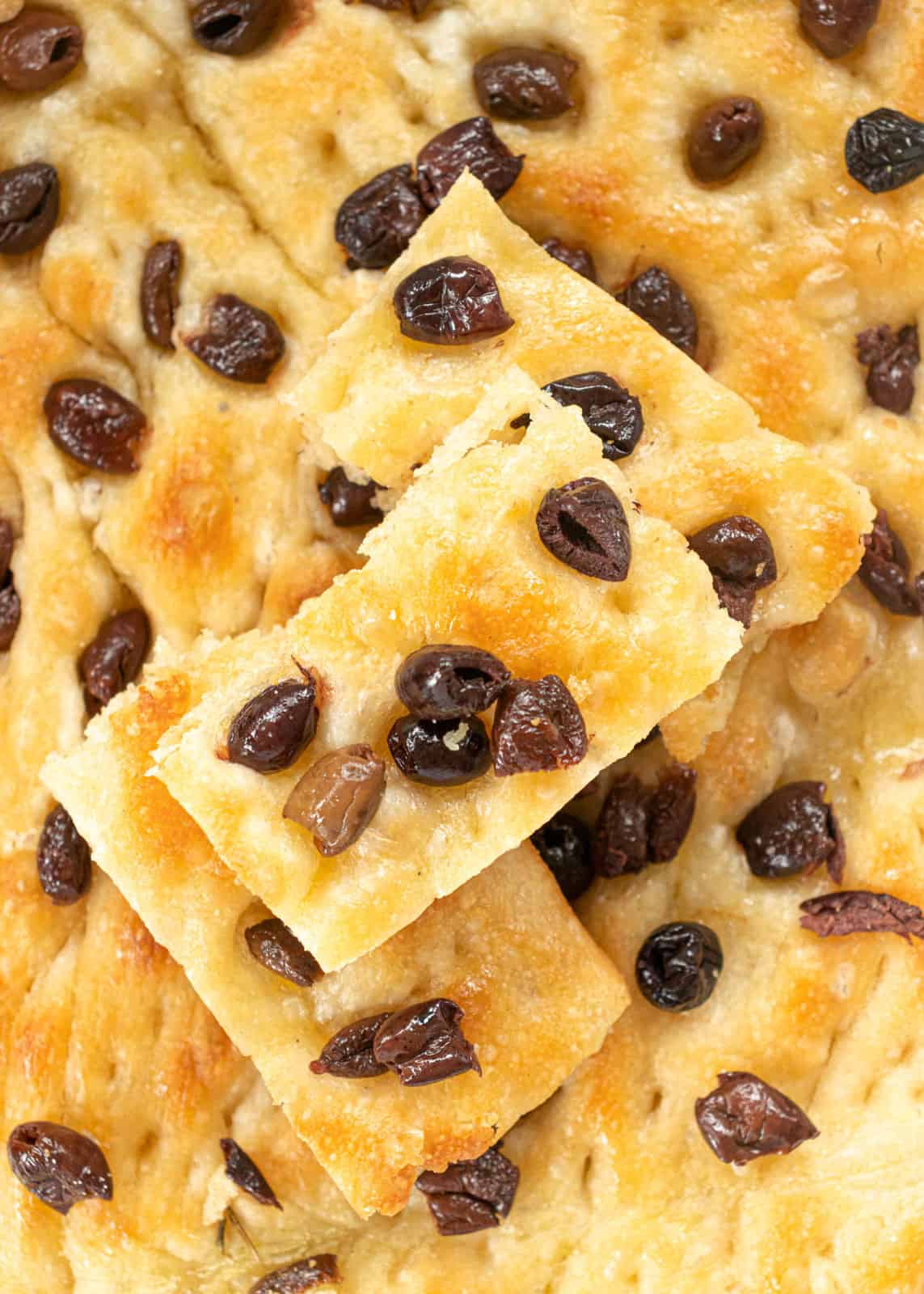
In Italy you will find a focaccia recipe in every bakery. In Genoa it can be found in every household. It is served on every occasion with fresh milk and cappuccino for breakfast. Or as a snack, accompanied by a glass of wine as an aperitif, and, of course, it should, just like bread, be part of every meal.
Focaccia recipe: Baked over fire
The word focaccia comes from the Genoese fugassa which literally means “baked over fire”. It is said that travellers, fishermen and bakers created focaccia. Due to their hectic lifestyle and having to work at night, they were often very hungry and wanted to satisfy their hunger as quickly as possible. They were, however, far too impatient to wait until bread had risen. And so the bakers began to put pieces of the still unleavened dough directly onto the bottom of the oven and then baked it. The dough, which was “baked over the fire”, was then topped with vegetables, meat, or cheese.

Forbidden Focaccia
In the Renaissance, the Genoese ate focaccia everywhere – even in church. It was, therefore, not unusual to eat it while drinking a glass of wine at church weddings at the moment of the blessing. However, when the Genoese also started eating focaccia at funerals, it became too much for the bishop of the time. And he prohibited the consumption of the bread during ceremonies. The Genoese, however, did not allow themselves to be stopped from their custom. This is why the cleric even threatened the Genoese with expulsion.
Toppings
As is so often the case with Italian food, the basic recipe can be varied according to taste. Some examples:
Mix dried tomatoes (50 g) or pitted olives (50 g) into the dough at the same time as you add salt and oil.
For onion focaccia, place the onion, cut into thin slices, on the top of the focaccia before baking.
Alternatively, the focaccia can be topped with one or a combination of the following ingredients. Small halved tomatoes, olives, capers or dried tomatoes.
Rosemary goes very well with focaccia and is particularly delicious because of its aroma.
📖 Recipe

Focaccia recipe - easy and quick
Ingredients
- 400 g flour, fine
- 200 g flour, 00 or W280-W330
- 400 ml water, lukewarm
- 40 ml olive oil, extra virgin
- 15 g salt
- 3 g sugar, 1 tsp
- 15 g yeast, fresh or 5 g dry
Toppings
- coarse salt
- extra virgin olive oil
- 100 g olives
Instructions
- Put the flour into the food processor with the dough hook inserted, crumble the yeast and add it along with the sugar. Slowly add the water and knead the dough for 20 minutes. The dough should completely separate from the bowl rim and form a compact mass.
- Only now, while kneading constantly, gradually sprinkle the salt into the dough, and slowly add the oil. Knead the dough for another ten minutes so that all the ingredients are thoroughly mixed together.
- The dough is soft, which is why you should grease both the work surface and your hands well before you place it on the surface. Once you have done this, fold the dough several times. To do this, take the edges of the dough in your hand and place them in the centre. Repeat this with every edge of the dough for about five minutes. This will give it a certain stability.
- Turn the dough upside down and form it into a round bundle. The dough should now be allowed to rise in a bowl covered with plastic foil for 60 minutes. Afterwards, it has approximately doubled in volume. After this time, you will notice that the focaccia dough is much drier, which makes it easier to handle.
- Grease the baking tray with some oil. Now, put the dough on the baking tray and spread it out with your hands. However, it should only be spread out by pressing, do not pull or stretch it, until it fills the entire tray. Here I recommend applying light pressure with your fingertips from the middle of the dough to the outside. Cover the spread dough with some cling film and let it rest for another 60 minutes.
- Sprinkle the surface of the dough with a thin layer of coarse salt. Pour two spoons of oil over the dough and press the dough firmly with your fingertips. By doing so, oil and salt are worked into the dough, at the same time forming the characteristic holes, which should be even and relatively close together. The salt helps to create a crust.
- Again, cover the spread out dough with cling film and let it rise for 60 minutes, or until the focaccia has doubled in height. This can take considerably longer in winter than in summer as warmer surroundings speed up the process.
Bake
- Remove the cling film and sprinkle some warm water on the surface of the dough before baking. The water keeps the dough moist and gives it its typical light colour. Ideally, place a container of water in the oven. Bake the finished dough in a heated oven at around 230 degrees for 18 to 20 minutes. Since every oven is different, the baking time can vary. After baking, let the focaccia cool down on a grid. This is especially important to keep the focaccia crispy. It is known that the focaccia usually shines with fat. You can achieve this by drizzling over a little oil. The focaccia can be served hot or cold.
Nutrition
Buon appetito!






Leave a Reply